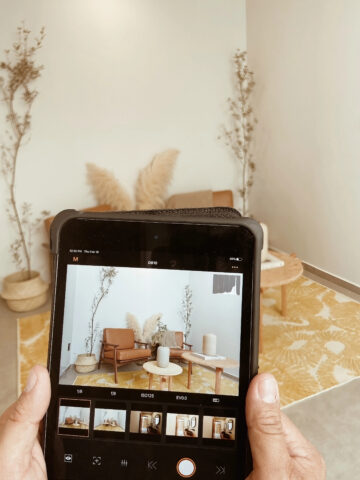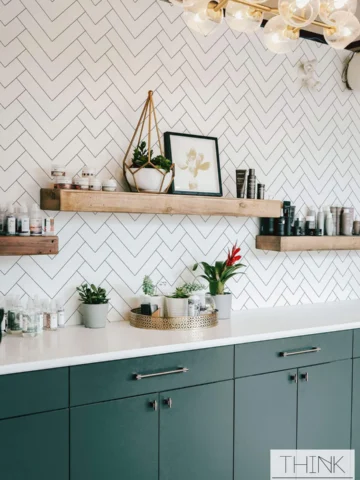Discover how to design the perfect study space in a student's room with our insightful guide! Follow these 5 essential tips for creating a focused and organized area that enhances learning and productivity.
Disclaimer: this post may contain affiliate links, and every purchase made through these links will give me a small commission (at absolutely no extra cost for you!) AS AN AMAZON ASSOCIATE AND REWARDSTYLE MEMBER, I EARN FROM QUALIFYING PURCHASES. See Privacy Policy for additional info.
An important first step for a student to do well in his or her studies, whether at high school, college, or university, is to create a good study space. With the right environment, it is easier to concentrate deeply, be more creative and effective, and avoid distractions that can lead to losing focus. Taking the following points into consideration will help him or her develop a dedicated study area in their bedroom.
1. Choose the Right Location for Your Study Space
Choosing the perfect location is the first step to creating a functional study zone. The place should be a quiet corner of the room, away from the flow of people and other forms of distractions such as a TV or family activity. Additionally, invest in a room divider or curtain to section off your study area if the room is shared or small. The physical separation will help you mentally distinguish between zones for relaxation and study.
That said, it can sometimes be hard for students to focus on their homework, especially if they live in a noisy environment. If you are familiar with this issue, know that you can get a custom research paper writing service to complete some of your assignments for you. They can write perfect essays and other papers, helping you on your way to academic success.
2. Invest in Ergonomic Furniture
Comfort has a direct influence on the time one is able to dedicate to concentration and studies. Opt to invest in an ergonomic chair, the first step toward creating a suitable posture zone, which limits your chances of backaches and fatigue during working hours. It is ideal if the chair is adjustable, so as to adapt to your physical proportions, as well as the posture in which you most feel at ease for study purposes. The more you find the space you are in comfortable, the longer you can work without reaching the limits of that comfort.
So, say we convinced you that you need an ergonomic chair, but how do you distinguish one? Here are the main characteristics of an ergonomic chair to look out for:
| Feature | Description |
| Adjustable Height | The chair should have a mechanism to easily adjust the height so your feet can rest flat on the floor and your thighs are parallel to the ground. |
| Lumbar Support | Good lower back support is crucial to prevent strain. The lumbar support should fit the curve of your lower back to offer proper support. |
| Adjustable Backrest | The backrest should be adjustable in angle and height, allowing you to find the optimal position for your back and neck. |
| Seat Depth and Width | The seat should be wide and deep enough to comfortably support any user. The depth should allow you to sit with your back against the backrest while leaving about 2 to 4 inches between the back of your knees and the seat. |
| Breathable Material | The chair should be made of a breathable fabric to prevent sweating and discomfort from long periods of sitting. |
| Swivel and Mobility | An ergonomic chair should easily rotate and have wheels that allow for easy movement around your workspace without straining. |
| Armrests | Armrests should be adjustable so they can support your arms at a level where your shoulders are relaxed. |
3. Optimize Lighting
Lighting is important whether you have a dedicated study area or a flexible workspace. During the day, sunlight is great for reading and can increase your ability to focus, but it can be irritating if it shines right onto your computer screen. If you have a desk near a window, consider getting blinds or drapes that limit the light when needed. At night and in gloomy weather, use a desk lamp that emits bright, focused light with a daylight bulb, which will also assist your eyes by reducing strain.
Here are a few other things you can do to optimize lighting in your study space:
- Maximize Natural Light: Position your desk near a window to benefit from as much daylight as possible, which can boost mood and energy.
- Use Task Lighting: Add a desk lamp with an adjustable arm to focus light directly where you need it, helping to reduce eye strain.
- Choose the Right Bulbs: Use LED bulbs that mimic natural light. Opt for bulbs labeled "daylight" with a color temperature of around 5000 Kelvin for optimal clarity.
- Avoid Glare: Position your computer screen to avoid reflections from windows or bright lights, which can cause glare and make reading difficult.
- Balance the Light: Combine different light sources to balance the light in the room, reducing harsh shadows and helping to prevent headaches.
- Adjust Brightness: Ensure your room’s lighting is adjustable so you can change the brightness according to the time of day and your activities.
- Use Soft Ambient Lighting: Include soft, ambient lighting to reduce the contrast between your task lighting and the surrounding area, easing the strain on your eyes.
- Consider Light Direction: Light your work area from the side or above to avoid casting shadows on your work surface.
4. Minimize Clutter
“Clutter is nothing more than postponed decisions” – as pointedly mentioned by Barbara Hemphill, an organizational expert. A messy room will lead to a messy mind. Keep the study area as organized as possible – use shelves, drawers, and desk organizers where possible to have a space for everything, such as textbooks, notebooks, stationery, or electronics. This not only saves time but reduces stress. Having everything in place makes it easier to get on with a task. Regular check-ins to ensure nothing has been left lying around is also important to keep the area tidy and allow students to focus on their work.
5. Personalize the Space
It’s good to keep functionality in mind, but it’s always a boon to personalize the area to be more enticing and pleasant to use. If possible, leave space for one or two personal items, such as a framed picture of your family, a favorite place, a beloved pet, or even an inspiring quotation or a small plant to add a touch of nature. This helps to make the area feel pleasant and motivating. Do, however, keep decorations to a minimum to avoid any opportunity for procrastination – it’s when you delay or put off tasks and responsibilities, often in favor of more enjoyable activities. It’s important to keep procrastination to a minimum as a student because the statistic is ruthless - over 95% of learners procrastinate to a certain extent.
Building Your Brain’s Best Friend
A well‐planned study room can radically change how students unlock the information they need while gaining the academic skills required to succeed. With these five tips, students can create a study experience that’s not only versatile but also comfortable and beautiful, allowing them to nestle into study habits that are rich, illuminating, and, most importantly, effective. Comfy, functional, and aesthetically pleasing, the study room will soon be a haven of fruitful activity and the base from which students will conquer their academic landscape.






















Leave a Reply